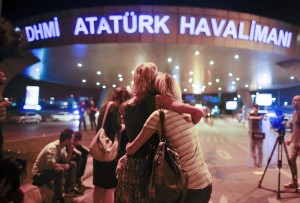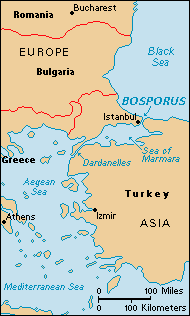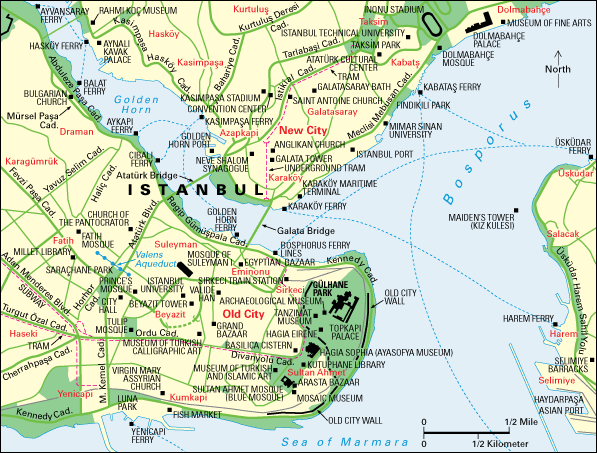Hagia Sophia 1480
Wednesday, December 27th, 2017December 27, 2017
The Hagia Sophia, an ancient cathedral, mosque, and museum, in Istanbul, Turkey, was dedicated 1,480 years ago today on Dec. 27, 537. The large structure is one of the most impressive surviving examples of Byzantine architecture. It was built between 532 and 537 as the Christian cathedral of Constantinople (now Istanbul). Hagia Sophia is renowned for its huge central dome and richly decorated interior. The Byzantine emperor Justinian I ordered the cathedral built after a fire had destroyed an earlier church that stood on the site. Hagia Sophia is Greek for holy wisdom.
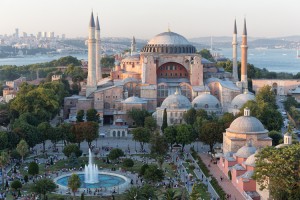
Hagia Sophia is one of Istanbul’s most famous landmarks. This masterpiece of Byzantine architecture was built in the A.D. 530′s as a Christian cathedral. Credit: © Mehmet Cetin, Shutterstock
The architects of Hagia Sophia, Anthemius of Tralles and Isidorus of Miletus, designed an elaborate framework of arches and vaults (arched ceilings). The framework supports the central dome and creates a complex interior space. The dome is 102 feet (31 meters) in diameter and rises to 185 feet (56 meters) above the floor. The building measures 250 feet (76 meters) from east to west and 235 feet (72 meters) from north to south.
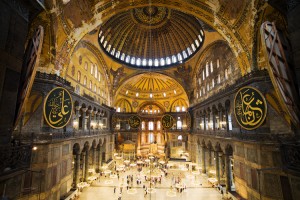
The large interior dome of Hagia Sophia towers over the vast central nave. Credit: © Artur Bogacki, Shutterstock
Multicolored marble veneers and ornamental mosaics originally decorated the church interior. Images of religious figures were added in the late 800′s. In 1453, the Ottoman Turks converted the cathedral into a mosque. Minarets were constructed, and the church’s iconic images were plastered over. Since 1935, Hagia Sophia has served as a museum. Mosaics of Mary, Jesus Christ, angels, bishops, and rulers have been uncovered.

